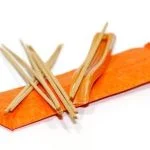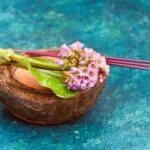Interested in learning how to blend essential oils for aromatherapy? Aromatherapy is the practice of using natural plant extracts, such as essential oils, to promote overall well-being. In this beginner’s guide, we’ll explore the basics of essential oils and how to blend them for therapeutic purposes.
To start, it’s important to understand what essential oils are and how they are extracted from plants. We will also discuss the different types of essential oils and their unique properties, allowing you to make informed decisions when choosing which oils to blend for your desired aromatherapy benefits.
Once you have a basic understanding of essential oils, we will delve into the benefits of aromatherapy and how it can improve both mental and physical wellness. Case studies and testimonials will be included to provide real-life examples of the positive impact that aromatherapy with essential oils can have on individuals.
Benefits of Aromatherapy With Essential Oils
Aromatherapy has been used for centuries as a holistic healing treatment, harnessing the power of essential oils to promote physical and mental well-being. The therapeutic benefits of using essential oils for aromatherapy are numerous and can have a profound impact on overall health. From reducing stress and anxiety to improving sleep quality and boosting energy levels, essential oils offer a natural and effective way to support wellness.
One of the key advantages of aromatherapy with essential oils is its ability to improve mental and emotional health. Certain essential oils have been found to have calming and relaxing properties, making them ideal for relieving stress, anxiety, and even symptoms of depression.
For example, lavender oil is well-known for its calming effects, while peppermint oil can help alleviate tension headaches and boost alertness. These benefits make essential oils a valuable tool for those seeking natural remedies for their mental well-being.
On a physical level, aromatherapy with essential oils can also provide relief from various ailments such as headaches, muscle pain, digestive issues, and respiratory problems. Essential oils like eucalyptus, tea tree, and chamomile have anti-inflammatory, analgesic, or antiseptic properties that can help alleviate discomfort and support the body’s natural healing processes. By incorporating these oils into your aromatherapy practice, you can take proactive steps towards maintaining your physical health.
In addition to these benefits, there is also evidence to suggest that aromatherapy with essential oils may have immune-boosting properties. Some essential oils possess antimicrobial or antioxidant properties that can combat pathogens or free radicals in the body. This makes them an excellent preventive measure against common illnesses such as colds and flu. Ultimately, the use of blended essential oils in aromatherapy offers a multifaceted approach to health and wellness by addressing both physical and mental aspects.
Essential Oil Blending Basics
Blending essential oils for aromatherapy is both an art and a science. The process of combining different essential oils to create harmonious and therapeutic blends is the key to successful aromatherapy practice. Blending essential oils allows you to customize scents, maximize therapeutic properties, and create unique combinations tailored to your specific needs.
Understanding fragrance notes is crucial when it comes to blending essential oils. Essential oils are categorized into top, middle, and base notes based on their aromatic qualities and evaporation rates. Top notes are light, fresh, and uplifting, while base notes are deep, earthy, and grounding. Middle notes provide balance and harmony between the top and base notes. When blending essential oils for aromatherapy, it’s important to select oils from each note category to create a well-rounded scent profile.
| Essential Oil | Therapeutic Properties |
|---|---|
| Lavender | Calming, soothing, promotes relaxation |
| Peppermint | Invigorating, energizing, relieves headaches |
| Eucalyptus | Respiratory support, clears congestion |
By mastering the basics of blending essential oils for aromatherapy and understanding how different fragrances work together, you can create custom blends that cater to your individual preferences and wellness goals. Whether you’re looking for stress relief or energy boosting benefits, experimenting with various combinations will help find what works best for you.
Tools and Supplies for Blending Essential Oils
When it comes to blending essential oils for aromatherapy, having the right tools and supplies is essential for creating effective blends. Here are some important items you’ll need to get started:
- Essential Oils: Of course, the most important supply you’ll need is a selection of high-quality essential oils. It’s important to choose oils that are pure and natural, as synthetic or diluted oils may not have the same therapeutic properties.
- Carrier Oils: Carrier oils are used to dilute essential oils before applying them to the skin. Common carrier oils include jojoba oil, sweet almond oil, and coconut oil.
- Measuring Tools: Accurately measuring your essential oils and carrier oils is crucial for creating safe and effective blends. You’ll want to have graduated glass droppers or measuring cups on hand.
- Storage Containers: Once you’ve created your blends, you’ll need a way to store them properly. Dark glass bottles with tight-fitting lids are ideal for preserving the potency of your blends.
In addition to these basic supplies, it’s also important to keep safety in mind when blending essential oils. Here are some crucial safety precautions and guidelines to follow:
- Patch Testing: Before using any new blend on your skin, it’s important to perform a patch test to check for any adverse reactions.
- Dilution Ratios: It’s important to dilute essential oils properly, especially when using them topically. Each essential oil has its own recommended dilution ratio, so be sure to do your research before blending.
- Proper Storage: Essential oils should be stored in a cool, dark place to preserve their potency. Be sure to label your blends with their contents and date of creation for easy reference.
By having the right tools and following safety guidelines, you can ensure that your experience with blending essential oils for aromatherapy is both enjoyable and effective.
Essential Oil Blending Techniques
Blending essential oils for aromatherapy is an art that requires both knowledge and creativity. Understanding the properties of different essential oils and how they interact with each other is crucial in creating effective and harmonious blends. There are several techniques that can be used to blend essential oils for aromatherapy, each with its own unique approach.
One technique for blending essential oils is by fragrance family. Essential oils are categorized into different fragrance families such as floral, citrus, woody, and spicy. Blending oils from the same fragrance family can create a balanced and harmonious scent profile. Another technique is blending by therapeutic properties. For example, combining calming oils such as lavender and chamomile with uplifting oils like bergamot and grapefruit can create a blend that promotes relaxation while also boosting energy.
In addition to these techniques, blending essential oils based on scent preference is another popular approach. This involves mixing oils that you personally enjoy the aroma of, leading to a custom blend that resonates with your individual tastes and preferences.
Regardless of the technique used, it’s important to start with small amounts of each oil and experiment with different combinations to find the perfect balance. With practice and experimentation, anyone can learn how to blend essential oils for aromatherapy effectively.
Popular Essential Oil Blends for Aromatherapy
Creating your own essential oil blends for aromatherapy can be a rewarding and effective way to address various health and wellness concerns. By combining different essential oils, you can customize the therapeutic properties of the blend to suit your specific needs. Whether you are looking for relaxation, stress relief, or an energy boost, there are popular essential oil blends that have been found to be effective in addressing these common concerns.
Relaxation Blend
One popular blend for relaxation includes lavender, chamomile, and bergamot essential oils. Lavender is well-known for its calming properties, while chamomile has a soothing effect on the mind and body. Bergamot complements these oils with its uplifting citrus aroma, creating a balanced blend that promotes relaxation and stress relief.
Stress Relief Blend
For those looking to alleviate stress and tension, a blend of clary sage, frankincense, and ylang ylang essential oils can be particularly beneficial. Clary sage is known for its ability to promote feelings of relaxation and emotional balance, while frankincense has a grounding effect on the mind. Ylang ylang adds a sweet floral scent that further enhances the blend’s stress-relieving properties.
Energy Boosting Blend
If you need an extra pick-me-up during the day, consider blending peppermint, rosemary, and orange essential oils. Peppermint is invigorating and refreshing, while rosemary is commonly used to improve mental clarity and concentration. The bright citrus aroma of orange adds a cheerful note to the blend, making it an excellent choice for boosting energy levels.
These popular essential oil blends can be used in various ways, such as in diffusers to fill your space with their aromatic benefits or diluted in carrier oils for use in massage or bath blends. When creating your own blends at home, it’s important to start with small amounts of each oil until you achieve the desired fragrance and therapeutic effect.
By understanding the properties of different essential oils and experimenting with blending techniques, you can create custom aromatherapy blends that cater to your individual needs for improved well-being.
DIY Essential Oil Blending Recipes
Creating Custom Blends
Blending essential oils for aromatherapy is a highly personalized process that allows individuals to create custom blends tailored to their specific needs and preferences. When creating custom blends, it’s important to consider the therapeutic properties of each essential oil and how they can complement one another.
For example, blending lavender and chamomile can create a soothing and calming blend perfect for relaxation and stress relief. Experimenting with different combinations of essential oils is key to finding the perfect blend that works for you.
Recipes for Diffusers, Massage Oils, and Bath Blends
There are various ways to use blended essential oils for aromatherapy, including through diffusers, massage oils, and bath blends. For diffuser blends, mixing uplifting citrus oils like orange or lemon with grounding scents such as patchouli or cedarwood can create an energizing and refreshing aroma in your living space.
When creating massage oils or bath blends, it’s essential to dilute the essential oils properly with carrier oils like jojoba or sweet almond oil to ensure safe application onto the skin.
Tips for Experimenting and Creating Your Own Signature Blend
Experimenting with different essential oil combinations is a fun and creative way to discover your own signature blend for aromatherapy. Start by experimenting with small batches of blends using just a few drops of each essential oil. Take note of the ratios used and how the blend makes you feel.
Keep in mind that some essential oils have stronger scents than others, so it’s important to start with smaller amounts when blending potent oils like peppermint or eucalyptus. With time and practice, you’ll be able to create unique blends that cater specifically to your individual wellness needs.
Utilizing Blended Essential Oils for Aromatherapy
In conclusion, understanding how to blend essential oils for aromatherapy can open up a world of therapeutic benefits for your mental and physical well-being. Aromatherapy has been proven to have a positive impact on managing stress, improving relaxation, and boosting energy levels. With the right knowledge and techniques, you can create custom blends that cater to your specific needs and preferences.
Blending essential oils for aromatherapy is an art that requires an understanding of fragrance notes, therapeutic properties, and personal scent preferences. By utilizing different blending methods such as blending by fragrance family or therapeutic properties, you can create harmonious blends that provide the desired effects. Additionally, experimenting with DIY essential oil blending recipes allows for customization and the creation of your own signature blend tailored to your unique needs.
Once you have created blended essential oils for aromatherapy, it’s important to know how to use them effectively and safely. Whether through diffusers, massage oils, or bath blends, incorporating these blends into your daily wellness routine can provide ongoing benefits.
When used correctly and according to safety guidelines, blended essential oils can be a valuable tool for promoting overall health and well-being. Therefore, mastering the art of blending essential oils is not only beneficial but also empowering when it comes to taking charge of your own wellness journey.
Frequently Asked Questions
How Do You Dilute Essential Oils for Aromatherapy?
Essential oils should be diluted for aromatherapy by using a carrier oil such as coconut, almond, or jojoba oil. The general rule of thumb is to use 1-2% essential oil in the carrier oil for safe application on the skin.
What Essential Oils Should Not Be Mixed Together?
Some essential oils should not be mixed together due to potential adverse reactions or conflicting properties. For example, citrus oils like lemon or bergamot should not be mixed with cedarwood or eucalyptus. It’s important to research and understand each oil before blending them.
What Essential Oil Blends Well Together?
Many essential oils blend well together to create pleasing aromas with therapeutic benefits. For example, lavender and chamomile are both calming oils that work well together, while peppermint and eucalyptus can create an invigorating blend for respiratory support. Experimenting with different combinations can lead to enjoyable and effective blends.

Are you looking for a natural way to improve your health and wellbeing?
If so, aromatherapy may be the answer for you.





